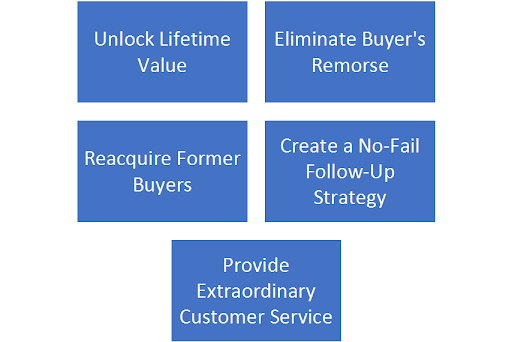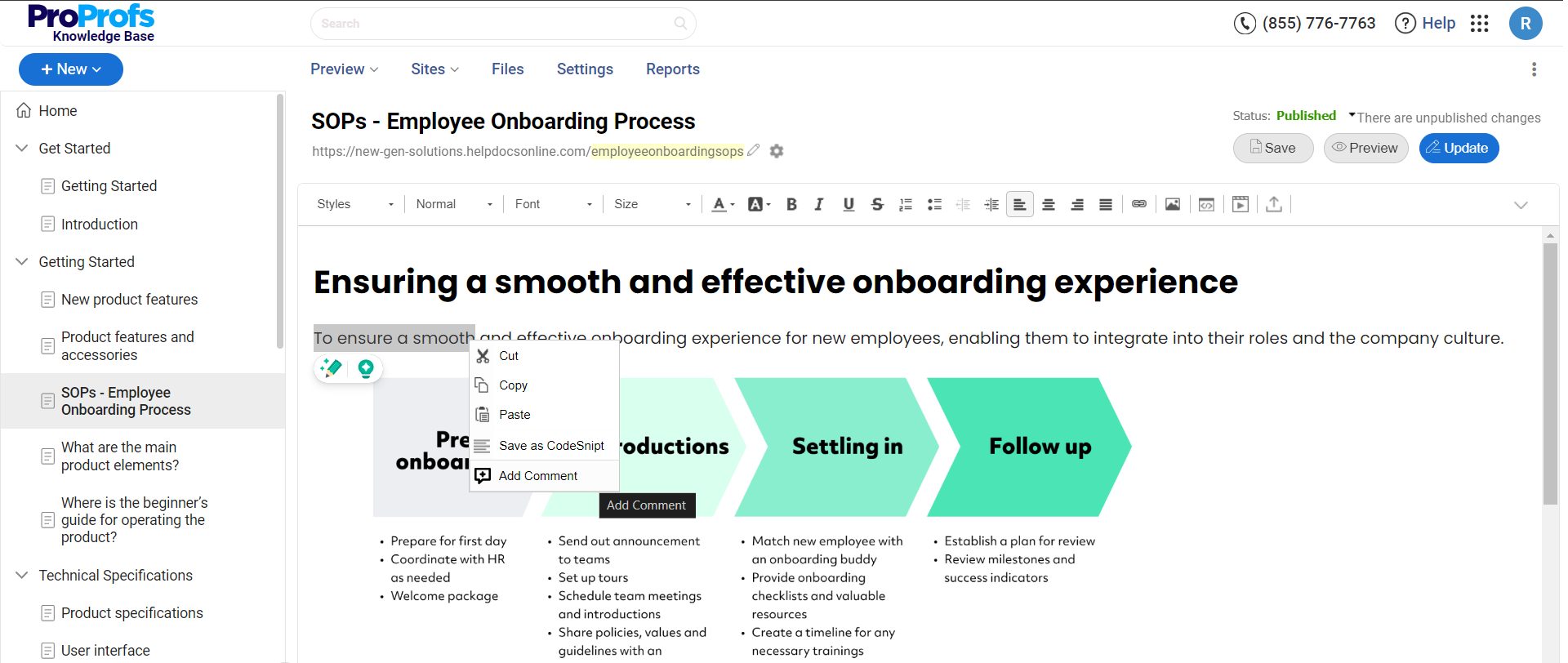A full-fledged knowledge management system can work wonders for an organization. Given the various benefits it offers, it has become a necessity for managing business knowledge and streamlining processes among both small and large businesses. Besides, a knowledge management system also helps firms to cater to their customers in a better way, provide them the best-in-class support experience and cultivate a healthy relationship with them.
At the heart of knowledge management lies an online knowledge base that is nothing but a central information repository that allows users to fetch information instantly at any time and from any device.
Having a customer-centric knowledge base that contains relevant information is a boon for any business. It equips customers with the right information to fix problems on their own, without reaching out to the support staff.
Let’s now take a look at how you can improve customer retention with a robust knowledge base:
1. Unlocking Customer Lifetime Value
After coming on board, a customer can provide you with a one-time gain or stay with your company for years and may become a steady source of profit. The difference in ROI rates among these two is huge, which is why the customer lifetime value should be an integral part of your business strategies.
Implementing a knowledge management system helps you achieve a higher ROI. You can create a knowledge base to store important information, which your clients can access conveniently to solve queries by themselves. Giving them a seamless problem-solving experience helps you build relationships based on familiarity, trust, and value.
A customer whose needs and pain points are met on a regular basis is satisfied and will always payback by continuing to stay with you. This can happen only if you have a full-fledged knowledge base in place. Improving customer retention with a knowledge base becomes extremely easy.
2. Eliminating Buyer’s Remorse
Bounce rates and abandoned carts are nothing but a buyer’s remorse. They are the greatest challenges for sales teams and something that ambitious companies have to reduce to the minimum. One sale can help you win a battle, but in order to win the war, you’ll need to uproot the buyer’s remorse and sell again.
That requires a sturdy post-sales strategy that is effective enough to convince customers that they have made the right choice. You’ll need to customize your follow-up process to cater to each individual customer, which could mean providing extraordinary customer service such as an email that expresses your gratitude or a feedback request.
A good customer support knowledge base provides actionable information needed for doing so. It helps you analyze the search pattern of your customers, the information they are looking out for, keywords that they use for searching and more. Leverage this data to add relevant content to your knowledge base and ensure that your customers get everything they need right when they need it. The more satisfied your one-time clients will be, the higher will be the probability of converting them into regular customers.
3. Reacquiring Former Buyers
Customer retention tactics primarily focus on those who have made a purchase but haven’t come back. Since, they have already entered your sales funnel, bringing these customers back is much easier than acquiring new ones. Once again, you’ll need to reach out and persuade. Of course, you can always contact them and ask what went wrong, a better idea would be to refer to the internal knowledge base that you used to store customer data and their feedback. A knowledge base is all you need to get valuable information that can help you regain their trust.
In terms of general customer behavior, inactive buyers are easier to reacquire. Look for their information in your knowledge base and understand what went wrong. This will make it easy for you to approach them the second time.

4. Creating a No-Fail Follow-up Strategy
Customer acquisition is not about making a single sale. In fact, it’s a long and calculated process. Here customer appreciation plays a significant part. The way you communicate with your buyers after the purchase has been made can make or break your chances of retaining them.
Commonly, this post-sales process implies “thank you” notes, premium offers and special deals. They are usually communicated via email, but only timely and personalized ones are truly effective. In order to stay in touch, show your respect and make customers feel valued. You need to address them as individuals rather than buyer personas.
For this, knowledge is essential. Every customer is unique and has different requirements. Understanding these requirements and then communicating with them makes more sense here.
In your knowledge base, you can also include information about the previous purchases made by customers and products in their wishlist. You can use this information to appreciate them for associating with your firm and then also pitch an offer that they won’t be able to refuse.
FREE. All Features. FOREVER!
Try our Forever FREE account with all premium features!
5. Providing Extraordinary Customer Service
The follow-up process includes customer service as well, which is why specific knowledge about customers is crucial and a knowledge base is your go-to place to gain that. Not just this, it also helps you reduce tickets and customer churn significantly. It equips your support staff with accurate information that they can use instantly while addressing customer complaints. This makes them more efficient, fast and productive as they are able to deliver quick solutions in real-time.
Creating a customer self-service knowledge base can guarantee increased efficiency of your support staff, that consequently reduces the number of tickets and increases customer satisfaction.
Leveraging Knowledge for Further Improvement
Create a knowledge base for your customers so that you can keep track of what they are up to. A powerful knowledge base provides you with reports that give actionable insights on customer behavior and search patterns. For instance, you can know what’s working for them and what’s not, which articles they like to read the most and which are the ones they don’t find relevant, the keywords they use to search for information and much more. Reports also provide you with relevant suggestions which new articles to add to your knowledge base.
Using these reports, you can gauge the behavior of your customers and find out what’s not working for them. Leverage this data to add new articles to your knowledge base and improve the existing ones so that your content is up-to-date and is in sync with what your customers want.
Another way is to directly ask them for feedback through questionnaires and surveys. This again is a good way to improve your knowledge base performance.
Leveraging the feedback given by your customers, you can create relevant FAQs, online documentation and user guides.
Conclusion
It’s a fact that only delighted and valued customers become long-term regulars. If you want to create a line of happy customers and brew a strong bond with them that lasts a lifetime, a comprehensive knowledge base is indispensable. Use a powerful knowledge base software to create an impressive online knowledge bank to serve your customers in the best possible way. Make this a part of your client retention strategy and you won’t regret.
 Tips
Tips
We’d love to hear your tips & suggestions on this article!
FREE. All Features. FOREVER!
Try our Forever FREE account with all premium features!

 We'd love your feedback!
We'd love your feedback! Thanks for your feedback!
Thanks for your feedback!







